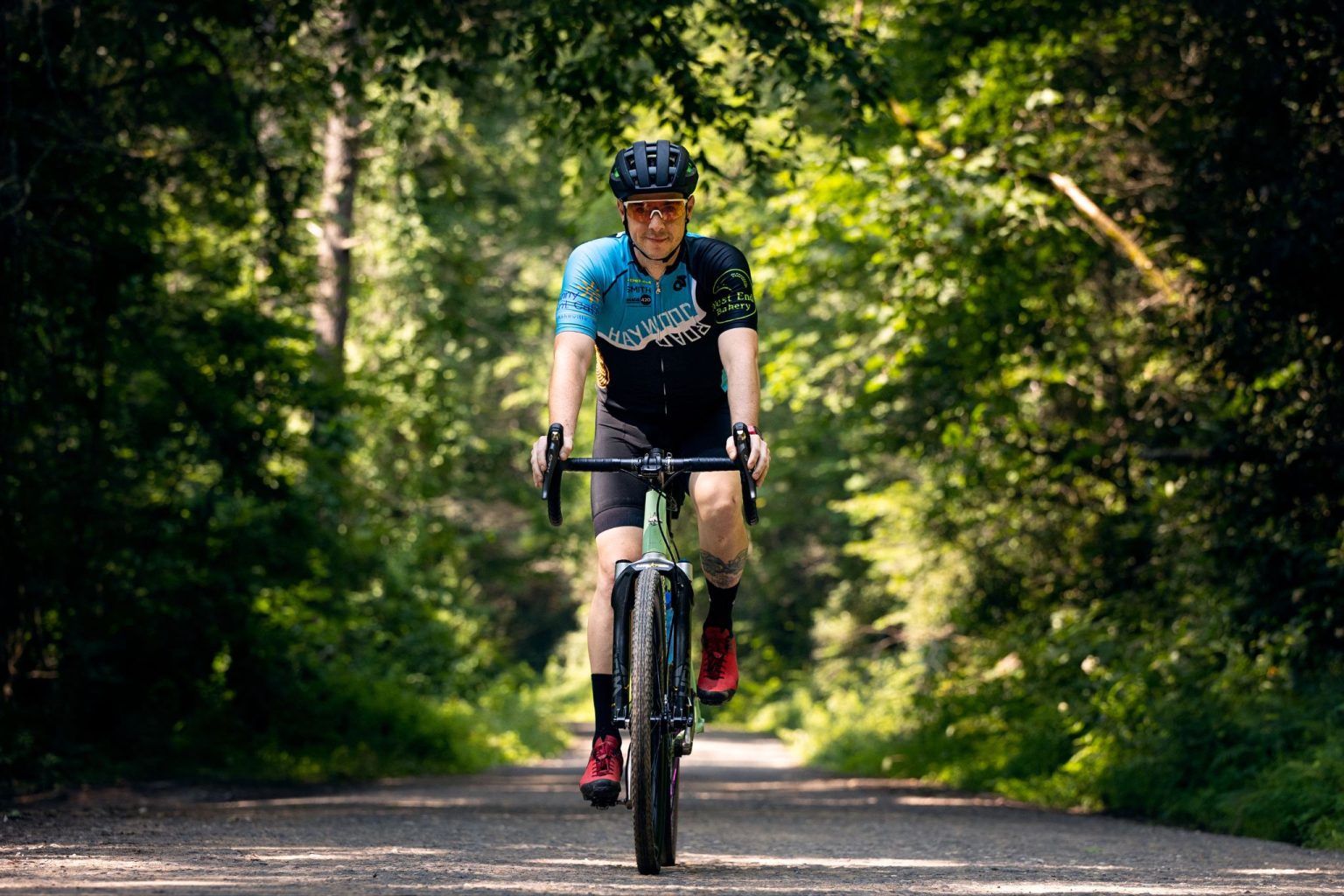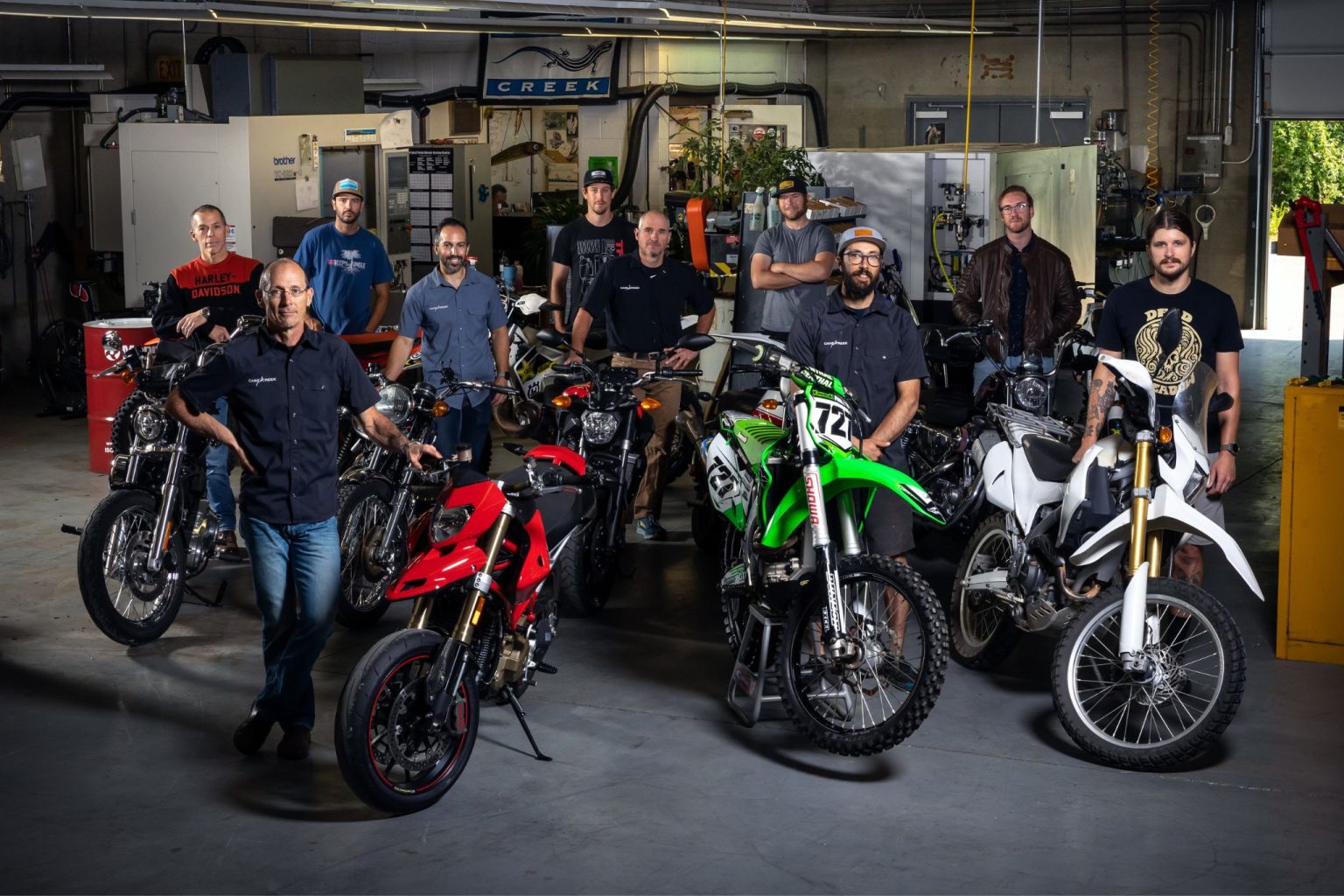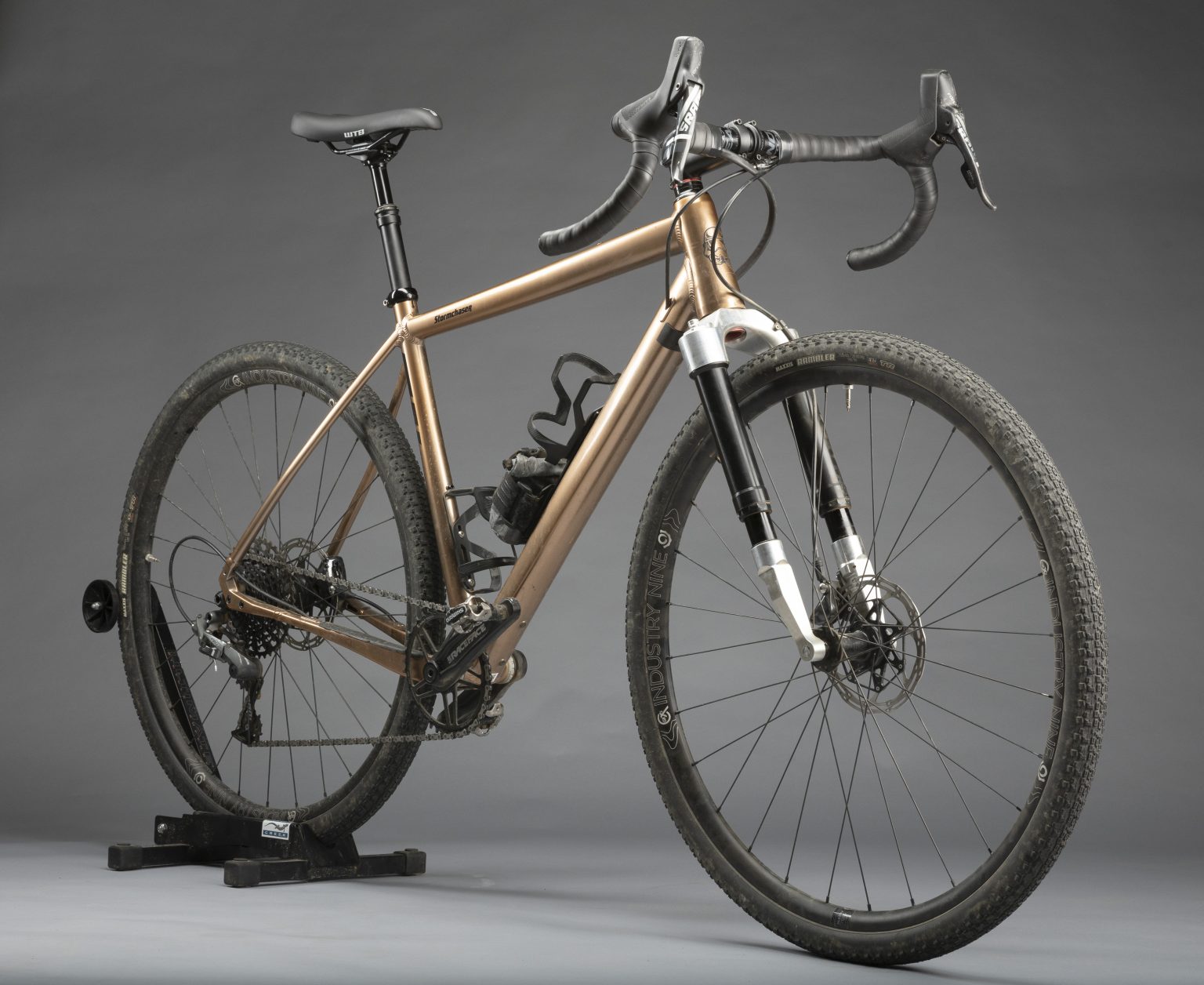PayPal now available at checkout
Free US Shipping On Orders $99+
Previous slide
Next slide


As a Product Manager, one of my main responsibilities is to identify opportunities. This can happen in numerous ways: from attending races or group rides, to doing hours of market research, and speaking with other industry professionals. It even includes discussion with other manufacturers. Sometimes discovering these opportunities can happen organically while out riding and realizing “hey, what if X did Y better?” Sometimes it’s just a small tweak to something existing, but sometimes it can be something big – something that has potential to change the way people think and more importantly, help them enjoy riding their bike more.
Rider Benefit is something we focus on a lot at Cane Creek, and it is the determining factor in why we make what we make. Asking ourselves “What’s the Rider Benefit?” is how we remain certain that our products will improve your bike and your overall riding experience. We don’t make products just because we can, and we don’t make products only for the sake of racers being able to go marginally faster. We make products because we believe in them, and we believe they will increase your enjoyment when out riding your bike.
Several years ago, when we began laying out the plan to make a gravel suspension fork, we identified that there were several key factors stopping people from truly entertaining the idea of adding suspension to their gravel bikes.
Functionality/Rider Benefit
Whether they know it or not, riders will benefit from added control on gravel. They want something that provides a smooth ride with confidence-inspiring traction and that is quick and easy to provide said benefit. There are forks out there that are simple, but don’t perform all that well for gravel, or have polarizing looks. There are others that perform well but are just too heavy and complicated (visually and functionally.) Like Goldilocks, we wanted Invert to be “just right” for gravel. I often relate it to carbon wheels. You buy carbon wheels when you want an immediate and noticeable benefit, with limited complexity and immediate setup.
Simplicity
Riders also don’t want to fiddle with adjustments to get the benefit they seek. The more minimal the setup, the fewer the knobs – the better! We also identified that sometimes people are often intimidated by the maintenance of a suspension product, so we knew we wanted to make that as easy as possible too. Good bike parts should make the experience of riding your bike more streamlined, not complicate it.
Weight
Even if you’re not a “weight weenie”, limiting the addition of weight to your bike is always a priority. One of the more commonly used arguments against suspension for gravel is that it adds unnecessary weight.


Aesthetics
Let’s face it, looks matter. Sometimes even more than function. Even if they believe in the benefits of suspension on gravel bikes, most riders are extremely hesitant to bolt a mini mountain bike fork to their sleek, drop bar gravel bike.
These four aspects are what we sought to address with Invert. Every fork ever made for drop bar bikes is lacking in one, if not several, of these categories. Collectively, these aspects became known as the “Four Pillars” of our design and informed every decision going forward.
If there were to be a ‘proper’ fork for gravel bikes, it should provide a smooth and controlled ride. It should be appropriately lightweight, and visually integrated to match the aesthetic of drop bars. It should also be easy to understand and simple to use. We knew we were on to something when we realized nothing else on the market could check all of these boxes at once.
Stage I: Shortened Helm for proof of concept
The first question to be addressed was “what type of spring should our gravel fork have?” For this early experiment, we cut down some Helm fork internals and set up our trusty mountain bike fork with only 40mm of travel. We rode our 40mm Helms with coil springs, elastomers, and air springs. An elastomer-based fork would indeed be simple, but would it provide the functionality we wanted? Coil forks and shocks are sensitive (would be great for gravel) but that spring type represents a lot of metal and isn’t lightweight. Ultimately, our test riders help settle the decision to go with an air sprung design. In a blind test, they consistently ranked it highest on a specially created rubric where we gathered qualitative feedback on things like suspension sensitivity, weight, descending/cornering confidence, and brake dive.

Stage II: The decision to go inverted.
After our initial ride testing, we began to brainstorm the ideal way to accomplish the 4 key product pillars we were after. Inspiration often comes from the lifestyles we lead. Many of us are passionate motorcycle enthusiasts and know inverted forks on motorcycles are a must-have for premium performance. Frankly, we felt that upside down forks had ‘unfinished business’ in the bicycle world and were curious to see what this layout could offer!
The most obvious benefit of the inverted design is that the aesthetics are far better than a traditional fork layout. We also saw that it could offer us the chance to use carbon fiber and build something very light. From a performance side of things, inverted forks reduce unsprung weight. This means that when you hit a bump there isn’t the additional mass of a cast metal lower to push upward and out of the way, leading to harshness felt by the rider. This lower unsprung weight makes inverted forks more sensitive to bumps – great for when you’re riding gravel roads at 15-20+mph. Inverted forks use gravity to keep all the lubricating oil at the bottom of the fork where it matters most, keeping things running smoother for longer. Yet another benefit is mud clearance. Without an arch like those found on the lowers of traditional forks, there is nothing between the tire and the frame to clog with mud in extreme conditions.
All in all, the inverted design proved to offer a pathway to achieving our Four Pillars, while also providing some additional, advantageous performance benefits.
Stage III – “The Mule”
At Cane Creek we are lucky to have our own, in-house machine shop, that we use for rapid prototyping. We can make anything from super small, intricate suspension parts – to complete, working prototype forks in relatively short time frames. We quickly decided we needed to build our own working, inverted fork for ride testing and research. While this original version was nowhere near our weight goals, we learned a lot from months of ride testing and iterating with it. We played with everything, from bushing and seal sizing to lockout firmness to the feel of the ‘click’ of the CS button. We would design, machine, build, test and repeat – and we did it a lot. Personally, I rode more than 20 different versions of “the Mule.”

Stage IV – Putting it all together.
Many people will look at Invert and assume that it has one big carbon fiber upper. Aesthetically, this was the goal. However, underneath the paint, it is actually a combination of a carbon CSU (crown steer unit) bonded to machined aluminum tubes. Early in the project we investigated using a full carbon upper, but this proved to be quite difficult since the fork requires perfectly smooth and durable inner surfaces for the internal moving parts to slide on. If the Invert upper were one-piece carbon, we would have had to post-machine the carbon structure. As you can imagine, this is quite difficult and expensive, as well as heavy since the carbon would need to be thick enough to allow machining. Alternatively, we could have bonded aluminum sleeves into the carbon legs. These internal sleeves would have needed to be quite thick to achieve the tolerance needed, meaning that it would also greatly increase the weight of the final upper.
We pivoted, deciding to construct the entire lower half of the fork from machined aluminum tubes and eliminate the carbon fiber entirely from the fork legs. This novel, hybrid solution achieved the best balance between the weight of the CSU, ease of manufacture, and the ability to hit our desired tolerances while keeping the fork’s cost reasonable.
While continuing ride testing and iterating with the Mule, we were also working on what the finish product would look like, because again, looks matter! We designed and evaluated numerous options for the shaping of the CSU (crown-steerer unit, the main visual piece) and lower dropout legs (the two legs at the bottom that move up and down, the nest two largest components). I’m really happy with how the fork turned out visually, and I know others will be as well.
Stage V – Continued Testing & big decisions
Once we had determined our plan for how the larger components were going to be shaped and manufactured, we needed to fatigue test them in our test lab to guarantee the ultimate strength of the fork. This is a crucial step in making sure everything is reliable and safe to ride. (For more information on the ISO fatigue testing we do here at Cane Creek, check out this past blog post written by our Engineering Manager, Lev Wechsler. – Rigorous Testing, Exceptional Safety, Cane Creek’s Commitment to Quality)
Once the fork had passed ISO, it was time to get riding. A lot of riding. What better test than the largest and most notable gravel race in the world?
We knew that Unbound Gravel 2023 would be the ideal initial testing ground for Invert. Reed Mann, our lead design engineer on the project, and myself were the first to put a fully formed Invert through its paces. We knew the race was likely to throw the kitchen sink at our new creation, and it proved to be ideal in evaluating the fork’s performance, traction, durability, and long-distance ride comfort. We came home with zero issues, referring to the experience between ourselves as “Passing the Unbound Test.”

With a working prototype chassis, we set up yet another round of outside rider testing to gather more feedback. With fresh eyes and legs riding the fork, it was time to focus on finetuning several key characteristics. We tested various versions of the air spring, focusing on finding the ideal spring curve (how progressive is too progressive?) We also gathered more feedback from riders on the Climb Switch functionality. Lastly – we wanted to determine the necessity of including a complex damper in the fork. Mountain bikes benefit greatly from high-performing, adjustable dampers – but was this necessary for gravel? Had anyone stopped to really ask if complex dampers in gravel forks provided real rider benefit to gravel riders? Too much of a good thing is too much, and adding functionality for its own sake (or that of the marketing team) is not a legitimate reason to include something in a well thought out design.
With the final round of blind testing done, we came to following conclusions on these questions:

Don’t be scared of service!
Having been making premium bicycle suspension for over 20 years, we know full well the importance of suspension service and what it takes to keep suspension moving smoothly. More often than not, riders fail to service suspension on time. It’s a hard thing to keep track of, and often it’s just plain inconvenient. We wanted to eliminate this concern with Invert. Servicing the fork is a simple process of unscrewing the seal heads (the notched aluminum pieces in between the upper and the lower legs) with the common 12 notch, 46mm bottom bracket tool. Once loosened, you simply slide the seal heads down the leg a few inches, drain the splash oil, wipe things clean, add fresh oil, and thread the seal heads back into place. You don’t have to separate the lowers from the upper, or even let the air out to perform this service! It’s almost as easy as lubing your chain or cleaning your bike.
“Everything you need, nothing you don’t”
As Cane Creek’s Product Manager, and a true Invert fan, I thoroughly believe in the above statement. We worked hard to identify what a gravel rider actually wants and needs and tried to avoid falling back into the status quo set by existing suspension products built for other types of riding. I’m hoping that Invert will open the minds of the ‘gravel suspension hesitant’ and allow people to make their gravel bike the best gravel bike it can be. After all – your gravel bike isn’t a mountain bike, and Invert is not a mountain bike fork. It’s the World’s First Gravel Fork.
Cheers to gravel.
-Kyle
Monday: 10:00 am – 5:00 pm
Tuesday – Thursday: 10:00 am – 7:00 pm
Friday: 10:00 am – 5:00 pm
Saturday – Sunday: Closed